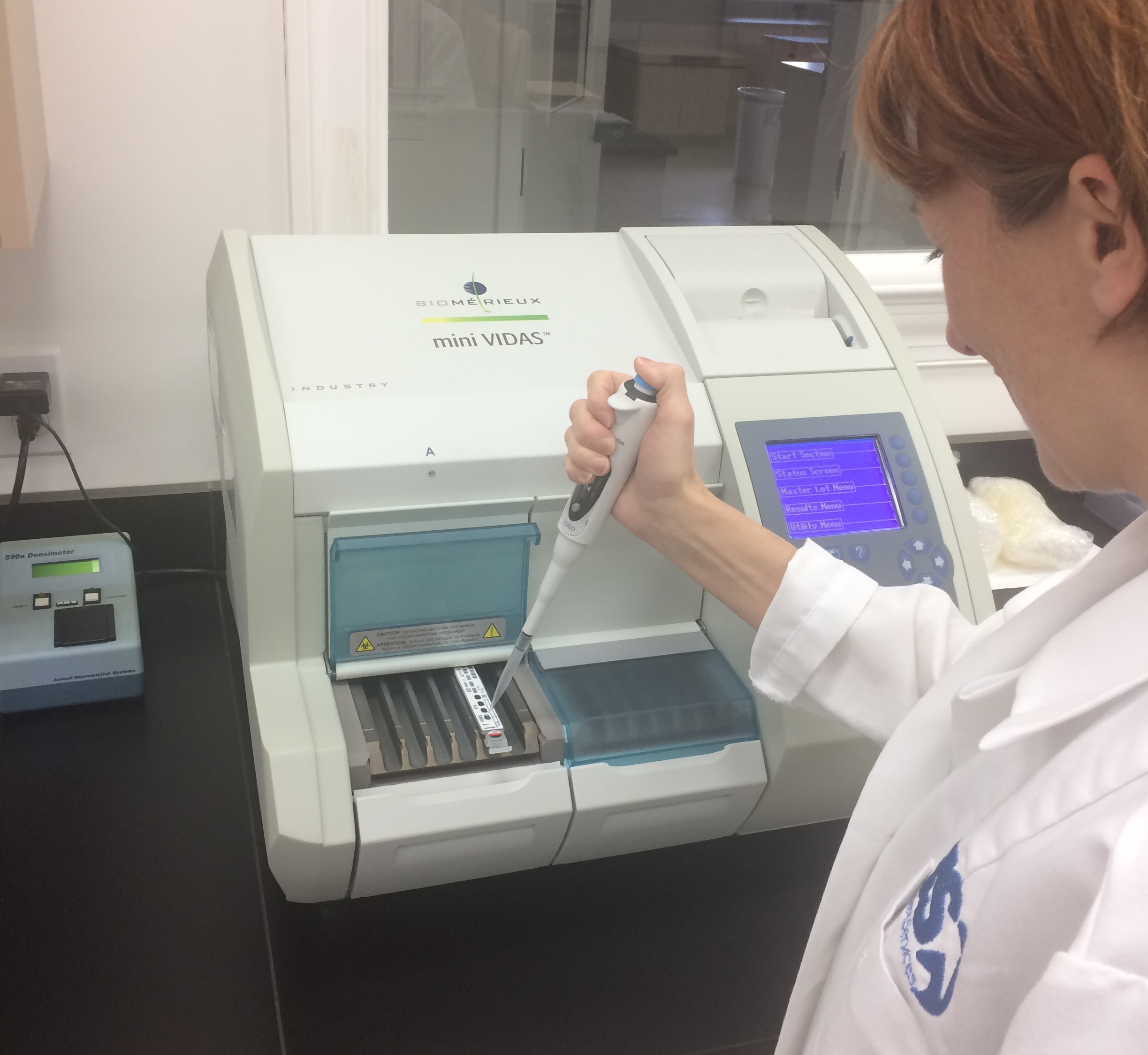 By far, the most discussed topic is supplementation of progesterone to pregnant mares to help them maintain a pregnancy. Many times, the questions stem from the necessity of such therapy, duration, and efficacy of supplementation. Sometimes, even with the best therapy, we fail to reach a good outcome, but the following discussion about the forms of supplementing progesterone is well worth a quick read for any breeder.
By far, the most discussed topic is supplementation of progesterone to pregnant mares to help them maintain a pregnancy. Many times, the questions stem from the necessity of such therapy, duration, and efficacy of supplementation. Sometimes, even with the best therapy, we fail to reach a good outcome, but the following discussion about the forms of supplementing progesterone is well worth a quick read for any breeder.
In our next article, I will review the physiology of progesterone in the pregnant mare and how we use these compounds for therapeutic decisions and intervention in problem pregnancies.
Progesterone Therapy by Dr. Patrick M. McCue, DVM, PhD, Diplomate ACT
Equine Reproduction Laboratory
Colorado State University
Fort Collins, CO 80521
Progesterone is a steroid hormone produced by the corpus luteum of the ovary in a non-pregnant mare and eventually by the placenta of a pregnant mare. Progesterone concentrations in blood are low during estrus and begin to rise after ovulation, reaching peak concentrations 5 days post-ovulation. Progesterone levels remain elevated until approximately day 14 of the estrus cycle after which prostaglandin secretion from the endometrium of the non-pregnant will result in lysis or destruction of the corpus luteum.
 Progesterone is responsible for suppression of behavioral estrus, closure of the cervix, alterations in endometrial glandular function, and other physiological events. It is also the most important hormone for maintenance of pregnancy in the mare.
Progesterone is responsible for suppression of behavioral estrus, closure of the cervix, alterations in endometrial glandular function, and other physiological events. It is also the most important hormone for maintenance of pregnancy in the mare.
Administration of progesterone or a synthetic progestin is used in the suppression of estrus in performance mares, management of the transition period, estrous synchronization, maintenance of pregnancy in embryo transfer recipient mares, as well as management of luteal insufficiency, twins, high-risk pregnancies, and placentitis.
Options for therapy include administration of natural progesterone or administration of a synthetic progestin such as altrenogest.
Progesterone (P4)
Natural progesterone is available as a therapeutic agent in short-acting or long-acting preparations.
Short-acting progesterone (SA-P4) formulations can be administered to achieve a rapid, but short-term elevation in blood progesterone concentrations. Intramuscular injection of SA-P4 results in elevated serum progesterone for approximately 24 hours, so doses are usually administered once daily (Figure 1). When using a short-acting preparation, a dose of 100 to 150 mg is required to maintain blood progesterone levels high enough to suppress estrus and a minimum of 200 mg progesterone per day is required to maintain pregnancy.
Long-acting progesterone (LA-P4) formulations of natural progesterone are available from several compounding pharmacies. Intramuscular administration of LA-P4 typically results in elevated serum progesterone for 7 to 10 days or more (Figure 1). Administration of 1,500 mg once every 7 days is usually sufficient to maintain pregnancy in mares in the absence of endogenous progesterone production. Anecdotal reports indicate that some mares may have a mild to significant inflammatory response at the intramuscular injection site. It should be noted that long-acting progesterone preparations marketed by various compounding pharmacies do not necessarily have identical pharmacokinetics or biological activity.

Administration of either a short- or long-acting progesterone preparation will make evaluation of endogenous progesterone production impossible, as the exogenous hormone will be detected in the progesterone assay.
Altrenogest
Altrenogest (Regu-Mate®; OvaMedTM; Altren®) is a synthetic progestin approved for use in the horse for suppression of estrus. It is also commonly used in management of the transition period, estrous synchronization, treatment of luteal insufficiency, management of high risk pregnancies and management of twins.
Altrenogest therapy for suppression of estrus or routine support of pregnancy consists of once daily oral administration of 0.044 mg/kg or approximately 1.0 mL per 110 lbs of body weight. Therapy for suppression of estrus should be initiated approximately 3 days prior to a show or performance event. Therapy for pregnancy support is often initiated 1 to 2 days after ovulation or after confirmation of pregnancy status at day 14 to 16. Altrenogest is also used in the support of high-risk pregnancies at twice the normal dose or 0.088 mg/kg, which is approximately 2.0 mL per 110 lbs of body weight.
Altrenogest is not detected in commercial progesterone assays. Consequently, endogenous progesterone levels may be monitored while a mare is being treated with altrenogest.
Other Synthetic Progestins
Medroxyprogesterone acetate (Depo-Provera®), hydroxyprogesterone caproate (Hyproval®), norgestomet (Synchro-Mate B®) and megesterol acetate (Ovaban®) have all been administered to mares in an attempt to block estrus or maintain pregnancy. The main purported advantage of these implant or depot hormone preparations is that they may be administered periodically instead of daily. Unfortunately, there are no synthetic progestins other than altrenogest that are effective in suppression of estrus or maintenance of pregnancy in mares. The reason for the lack of efficacy of the other synthetic progestins is hypothesized to be failure to bind to the equine progesterone receptor. Consequently, although these products may appear to be convenient, they should not be used in horses due to lack of efficacy.
Progesterone/Progestin Therapy
The vast majority of pregnant mares do not need supplemental progestin therapy. However, inadequate production of progesterone by the corpus luteum has been proposed to be a contributing factor to early embryonic loss in mares. ‘Progesterone insufficiency’ is a controversial topic. Endogenous progesterone levels ≥ 4.0 ng/ml are generally considered adequate to maintain pregnancy. Mares with progesterone concentrations below 4.0 may be at increased risk of pregnancy loss.
Endocrine support of pregnancy with progesterone or altrenogest in problem mares is usually initiated 1 to 2 days after ovulation and is continued until day 100 to 120 of pregnancy, at which time production of progesterone by the placenta is adequate to maintain pregnancy. Rarely a mare with a history of repeated mid- to late-term pregnancy loss may be supplemented throughout the duration of pregnancy. The chart below provides options for initiation and discontinuation of progestin therapy.



Log in to join the conversation.